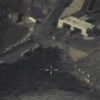‘1953 coup against Mossadegh led to 1979 US embassy takeover’
The US-sponsored 1953 coup d’état against the government of Iranian Prime Minister Mohammed Mossadegh led to the 1979 US embassy takeover by students in Tehran, a former US Senate candidate and political analyst says.
Mark Dankof, who is also a broadcaster and pastor in San Antonio, Texas, made the remarks in an interview with Press TV on Saturday while commenting on reports that the US government will award millions of dollars to the Americans who were taken into custody at the US embassy in Tehran in 1979.
Each of the 53 detainees or their estates will receive up to $4.4 million, according to a $1.1 trillion spending bill passed last week by the US Congress. The law authorizes payments of up to $10,000 per day of captivity for each of the detainees, 37 of whom are still alive.
Dankof said that “if we were to look at the amounts of money that are being paid to these 53 people or to their estates and to compare it with what American wounded veterans are not getting from their government, and also what American POWs historically were not getting from their government in regard to everything that they went through at war time, many Americans if they understood this in that perceptive, would perceive that these payments are now going to be made to these 53 hostages of the November 1979 timeframe would be seen as excessive.”
He said that the long-term American prisoners of war (POWs) and certainly some of the injured American veterans received “far less compensation from their governments than they were entitled to.”
“There’s something else that’s going on here as well, and that’s — once again — what happened in November of 1979 is appearing in the American media with no reference to or contextualization in terms of what happened in Iran in 1953,” he stated.
“The average American does not know and his media and his government are certainly not going to inform him or her that in 1953, the United States Central Intelligence Agency and the British MI6 participated in something called Operation Ajax, which resulted in the overthrow of Prime Minister Mohammed Mossadegh of Iran – illegitimately so – and the subsequent installation of Mohammad Reza Shah Pahlavi to his throne by the CIA and secondarily the British MI6,” the analyst pointed out.
“The entire set of circumstances that surround that activity, which became a primer for CIA covert operations around the world after 1953, is to be found in all of the papers that have been declassified on this whole subject. It has been obtained by a Freedom of Information Act lawsuit,” he said.
“The American Free Press in Washington, DC, for which I have contributed from time to time … has published all of these available documents that had been obtained from the George Washington University National Security Archives on Operation Ajax, which give in the CIA’s own words all of the details as to who was involved in this plot, how this was undertaken, and specifically how contrary this whole situation was at the time, and was prior to 1953 and all the years since 1953 in terms of the stated values and objectives of the American government when it comes to democracy that are consequently being parroted by the American news media,” he added.
“The fact is that Operation Ajax set in motion the tragic series of events in the 25 years that followed it that led to… the November 1979 takeover of the American embassy in Tehran,” Dankof noted.
In November 1979 and in less than a year after the victory of the Islamic Revolution that toppled the US-backed Pahlavi monarchy, Iranian university students seized the US embassy in Tehran.
The students believed the US mission had turned into a center of spying aimed at overthrowing the Islamic establishment in Iran following the Islamic Revolution earlier that year.
Documents found at the compound later confirmed claims by Iranian students that Washington was using its embassy in Tehran to plot against the new Islamic Republic of Iran.





